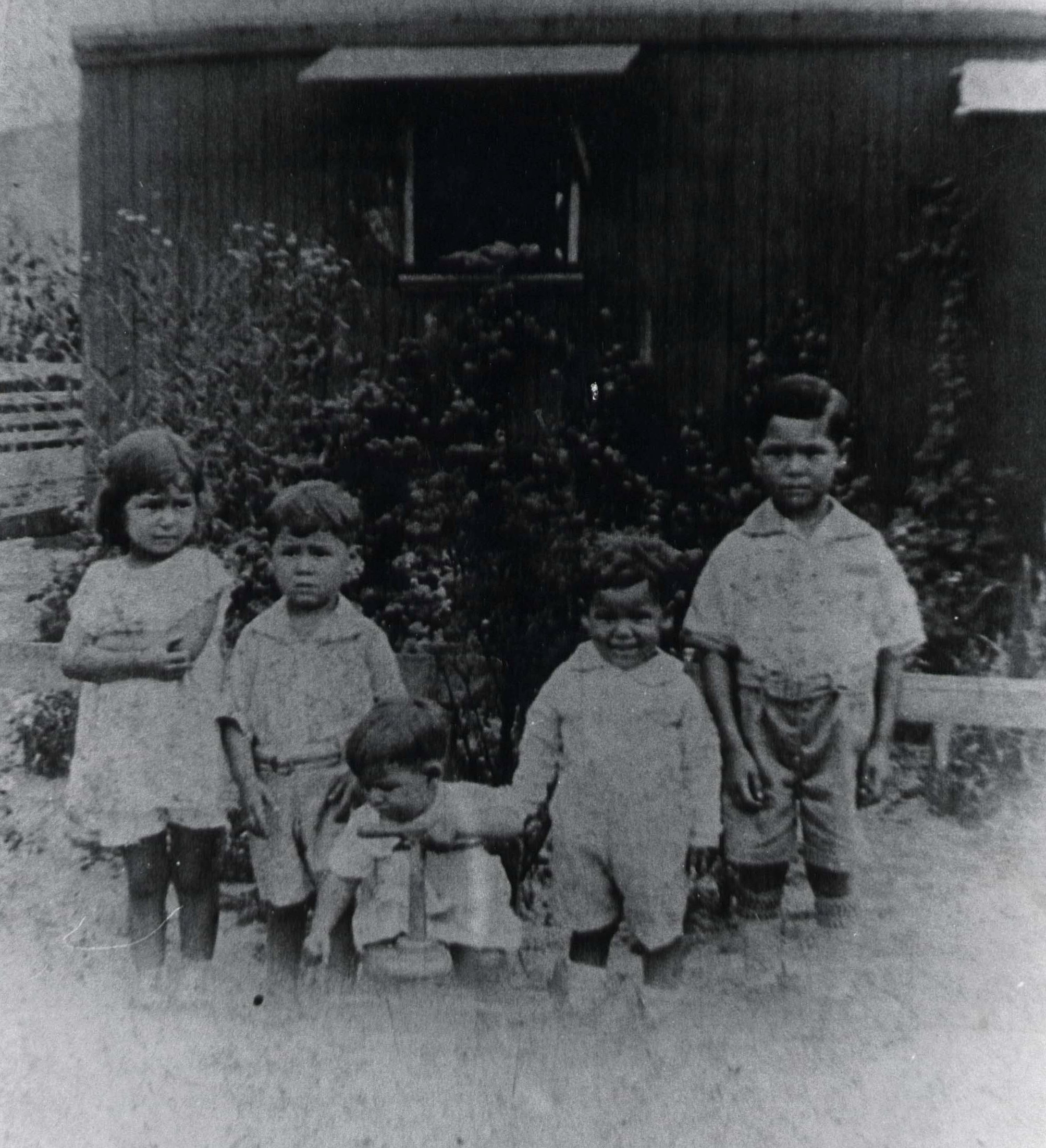Growth of the North End
 |
| Children of the Navarro family outside their boxcar home, 1929. Courtesy Chris Alonzo |
By the 1920s, Wichita's North End consisted of a number of Mexican American communities. In time, Mexican laborers found employment beyond the railroad. In north Wichita, one of the most important industries was meatpacking. One of the first plants in Wichita was Cudahy, located North of 21st Street on the east side of Broadway. The plant opened in 1901 and almost immediately hired Mexican laborers. Another meat packing plant in the area was Jacob Dold Packing Co, which also hired Mexican workers. Compared to the railroads, meatpacking plants provided more stable year-round employment and were important factors in the establishment of Mexican American communities in Wichita's northern neighborhoods, including El Huarache and the North End.
The major period of growth in the North End from Mexican immigrants was between 1915 and 1925. The North End community of Mexicans lived mostly between 21st Street and 25th Street within a few blocks west of Broadway. The 1930 census indicated both Mexican and other white families of various origins lived in this area. As would be expected the majority of the men living in this area, whether Mexican or not, worked in the meat packing, most listed as butchers.
The North End community became a focus for the Mexican immigrants in the North End and in the other smaller near by Mexican communities such as El Huarache. The Mexican residents north of downtown founded the churches of the North End - The First Mexican Baptist Church and Our Lady of Perpetual Help. Our Lady had a school for the children through 8th grade attend by most Catholic Mexican children. The rest of the Mexican children attended the public schools in the area. Although there was a Catholic High School (Catheral High) downtown, most children in the North End attended North High.
Most immigrants and their children wanted to be American. They assimilated to the American culture through participation in American social activities. They went to the American movies, played American sports, and dressed in American styles. There were several Mexican Bands – playing American music, and Mexican sports teams of baseball, basketball, etc. Although they were acting American, these activities were mostly done in a Mexican community as there was very little mixing in social settings.
Follwing the story as the North End became the center for the Mexican culture in Wichita.

